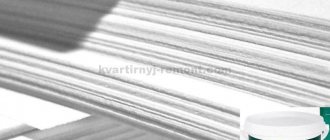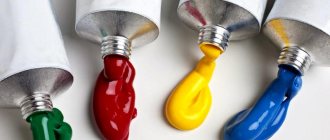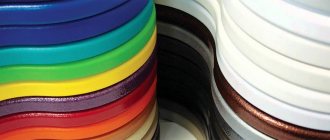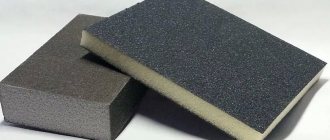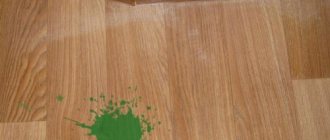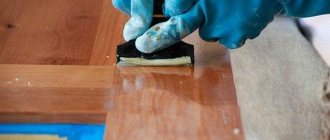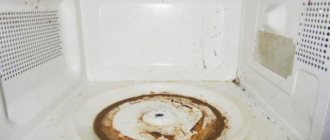As a rule, visitors to restaurants and cafes pay attention not only to the taste of the dishes served, but also to how they are decorated. Therefore, chefs try to decorate this or that dish as best as possible. Most attention in this case is paid to sweets and desserts. At home, you can also create various patterns from cream and sprinkles.
It's best to learn how to make food coloring at home rather than buying it at the store. The result will be no worse, and it is not dangerous to health. This homemade dye is used to color sauces, jellies, mastic, cream and much more.
What types of food colorings are there?
Food colors can be both synthetic and natural. In turn, synthetic ones are divided into liquid, dry and gel. Dry dyes are diluted in a small amount of liquid to give the dish the desired shade.
Powdered dyes are diluted with boiled water, alcohol or vodka, and, if desired, applied to baked goods in dry form. Protein mass for creating patterns and creams are usually colored with liquid dyes. They are quite often used in airbrushes or in sugar mastic as a water substitute.
Liquid food coloring is very similar to gel food coloring, but the latter is thicker and more concentrated. It is used in coloring creams (not protein ones), glazes, mastics and doughs. Using gel dyes you can create both delicate shades and rich and bright colors.
Food coloring - calorie content, beneficial properties, benefits and harms, description
Calories, kcal:
0
Carbohydrates, g:
0.0
Food coloring is a simple and affordable way to “color” food products. Almost any color, even the most exotic, various designs, ornaments and backgrounds can be obtained using food coloring. From the name it becomes clear that the dye can be eaten, so it must be made only from safe products or chemical compounds. After all, food coloring can only be of two types - natural and synthetic.
Natural food colors are raw materials obtained from plants, animals and microorganisms.
Synthetic food colors are produced in the form of powder, liquid (gel), pencils and felt-tip pens.
Food coloring calories
The calorie content of food coloring is 0 kcal per 100 grams of product.
Food coloring composition
As a rule, well-known fruits, vegetables and berries act as suppliers of natural food coloring colors. Carrots, lemon, saffron will give rich yellow, cherries, cranberries and beets - red and pink. To obtain green color, spinach and sorrel (calorizer) are used. To get a brown color, take tea, coffee and cocoa powder. The biggest difficulty is caused by the blue color, which is difficult to find in nature. But this problem is also solved with the help of “blue” berries - blackberries and blueberries. The deep blue-black color is borrowed from cuttlefish ink.
Synthetic food dyes are made using complex technologies, have an extended shelf life, and the color palette of such dyes is truly limitless.
Food coloring in cooking
Synthetic dyes are used mainly for decorating confectionery products - cakes and pastries and for making confectionery mastic.
And yet, the most famous and widespread natural food coloring for our housewives is onion peel, in a decoction of which eggs are boiled every year before Easter to please everyone with their excellent rich color and benefits for the body.
www.calorizator.ru
How to get natural red dye
This dye can be obtained using the juice of berries, fruits and vegetables that contain red color, it can be:
- beet;
- strawberry;
- currant;
- pomegranate and other food products.
But you can get red food coloring from more than just fruits; try using deep red tomatoes, red peppers, and paprika powder. But nevertheless, the most beautiful color comes from beets.
You can get red dye from beets as follows:
- Wash the root vegetable thoroughly under running water, peel it, and then grate it. Fill the beets with water. You don’t need a lot of liquid, it should just cover the grated vegetable. Place on low heat and cook for an hour.
- Please note that the pan must be covered with a lid. Add a little citric acid (1/2 teaspoon) to the broth; this will prevent it from discoloring. Once cooled, the red food coloring should be strained and then used.
How to make black food coloring
Black food coloring can be obtained in several ways:
- First way. Mix five drops of purified glycerin with an activated carbon tablet.
- The second way is how to make black food coloring at home. Black color can be obtained by mixing artificial dyes of several colors. For example, take red, yellow and blue food colors and mix thoroughly - you will end up with a black color.
- The third way is how to make black food coloring at home. Take cuttlefish ink. It’s been quite easy to get them lately; they are sold in almost every large hypermarket. But despite the fact that the ink has practically no taste, there is still a certain specific taste, and therefore it is not recommended to use such black food coloring for mastic or other sweet dishes.
How to make brown natural dye at home?
Many novice confectioners think that brown dye at home is made only with cocoa. This ingredient can be used if you need to decorate a sweet cake or pastry.
But what if you need dye for a salty dish? You can use coffee. It must be brewed and strained through a sieve - the dye is ready.
Brown dye is also made from caramel:
- Boil sugar with a little water in a ratio of 5:1.
- Heat until mixture turns brown.
- Then remove from heat and add some water.
Important: Do not burn the sugar so that the caramel does not taste bitter.
How to make egg dye
Yellow food coloring (recipe): add turmeric (3 tablespoons) to a boiling vinegar solution. Remember that turmeric is quite a strong dye, so before you start working with this dye, be sure to wear rubber gloves to protect your hands from staining.
Pink: Chop 4 cups of raw beets and add them to the bowl with the eggs. If the eggs seem brown instead of pink at first, don't be discouraged. Once they dry they will be a nice pastel shade.
Food coloring for blue eggs is made as follows: add 3 cups of chopped purple or red cabbage to the solution. In order for the eggs to turn blue, they should be kept in the solution for half an hour. If you want to achieve a blue color, then put the eggs in the refrigerator and let them sit there in the solution all night.
Orange color: Onion skins (four cups) give eggs a beautiful orange tint. To get a brighter color, as in the previous case, without removing the eggs from the dye, leave them in the refrigerator overnight.
DIY silver food coloring: Place 2 cups of frozen blueberries in a container and add 2 cups of clean water. Wait until the mixture comes to room temperature and then crush the berries. Let it sit a little longer, then strain the solution. Place Easter eggs in the dye and put them in the refrigerator - let them stay there until the morning.
Every pastry chef is an artist who strives to ensure that his creation becomes a real work of art. Only an artist uses paints, and a confectioner uses food colorings, which, unfortunately, are not healthy. But how to get out of this situation, because not only taste is important for dessert, but also appearance?
Let's find out!
To give your confectionery a beautiful color, you don’t have to run to the store and buy all kinds of synthetic food dyes. It is enough to have a few vegetables and fruits on hand with which you can make natural food colors at home. The only thing is that the colors obtained this way will not be very bright and saturated.
So, how can you make food coloring at home and get the color you want?
Natural food coloring: red and pink
The best ingredient for getting a natural pink color is beets. Its juice will change the color of the product without affecting the taste.
How to do it?
Simply wash the beets and place them in a blender with 1/2 cup of water. Mix everything until smooth, then strain. The resulting liquid is your natural food coloring.
You can also use cherry, pomegranate and raspberry juice to make red dye.
Natural food coloring: orange
To make orange food coloring, the ingredients needed are papaya, mango or pumpkin. But the easiest way to get orange is to use carrots.
How to do it?
Peel the carrots, grate them on a coarse grater and place them in a hot frying pan. Pour in butter and fry over low heat. Then let the carrots cool and strain through cheesecloth. You can also use carrot juice as a dye.
Natural food coloring: yellow
If you've ever used turmeric, then you know that it turns yellow everything it touches: clothes, skin, tables, etc. Therefore, be careful when making this dye.
How to do it?
Mix 1/2 cup water and 1 teaspoon ground turmeric in a saucepan and then boil. Let cool. This dye should be stored for no more than two weeks in the refrigerator.
Natural food coloring: green
The combination of Matcha green tea powder and spinach creates a beautiful green color that is perfect for garnishing dishes.
How to do it?
Combine 1 tablespoon Matcha powder, 1/2 cup fresh spinach and 1/2 cup water in a blender. Mix until smooth, then strain. The resulting liquid is natural green food coloring.
Natural food coloring: blue and purple
The most difficult color is blue. It can be obtained from eggplant peels, grape juice, blue potatoes or purple/red cabbage. Blueberries also make a great natural purple food coloring.
How to do it?
Combine 1/4 cup fresh blueberries with 1/8 cup water in a blender. Mix until smooth, then strain to obtain natural purple food coloring.
To get blue natural dye from purple/red cabbage you need to boil it, after which the water will turn dark. You can use this water as a dye, and to make the color brighter, add a little soda.
Natural food coloring: brown
The brown color can be obtained not only from cocoa powder, coffee or chocolate, but also from burnt sugar.
How to do it?
Mix sugar with water 5:1 and pour into a frying pan. You need to fry the sugar over low heat, stirring constantly. When the mixture reaches the desired shade, remove it from the heat and add a little more water.
Natural food coloring: black
An important role is also played by the black dye, which can be obtained thanks to a special type of cocoa powder called “Dutch ultra”. Also, to get black food coloring, you can use cuttlefish ink, but the dishes will then have a salty taste.
You can also mix food coloring to create different shades and new colors.
We hope that the article on natural food colors was useful to you. Don't forget to "like" it.
Beige dye
To make your own beige food coloring, use tomato paste. The color saturation depends on the amount of this product, for example, if you add a lot of tomato to the cream, it will become more orange than beige. Tomato paste does not change the taste of the dessert.
If you have prepared several different natural dyes in advance, you can create new colors from them if you wish. To do this, you just need to mix the existing ones. For example, to get a sea green color, you should mix two dyes: green and blue, and for a blue tint you need to add green to red. Mixing red, blue and green produces black. A beautiful pistachio shade can be achieved by mixing blue and yellow dyes.
Why is it not so easy to paint mastic black?
Getting a rich black mastic color is not so easy. Here are the main reasons:
- White + black = gray
If we remember the rules for mixing colors, it will become clear that when adding black to white, the result is not bright black, but gray. Therefore, to paint the mastic pure black, you will need a large amount of dye. This is very uneconomical. You can make your task easier and reduce the amount of dye by coloring brown mastic rather than white. But even this method does not guarantee 100% high-quality results.
- Poor quality dye
If you use food coloring with weak pigments, you will also not be able to achieve a beautiful black color. Also, if there are not enough pigments, much more dye will be required, which will negatively affect the condition of the mastic. Therefore, if you decide to color the mastic yourself, purchase good quality dyes from trusted manufacturers.
- Mastic does not like moisture
To color mastic, it is recommended to use water-soluble gel or paste dyes (rather than liquid and powder). But even such dyes contain moisture, and mastic does not like moisture. Of course, if a small amount of dye is required for coloring, then this will not affect the quality of the mastic. But if we are talking about a rich black color, then you will need a lot of dye, which means that a lot of moisture will get into the mastic and it can soften or slide off the cake.
Blue and purple colors
These colors can be obtained from blueberries, dark grapes or eggplant skins. You can also use purple cabbage for this purpose, which is pre-cut and boiled. Sugar can be used to create a brown color. To do this, sugar is mixed with water (5:1) and placed in a frying pan. Turn the heat to low and fry the sugar, remembering to stir it constantly. Gradually the mixture begins to acquire a brown tint. Add a little more water to it and strain. In addition to sugar, brown color can be obtained using cocoa, coffee or chocolate.
Mixing Rules
You can mix homemade dyes to obtain a specific color or shade according to the general recommendations for industrial pigments. Below is a diagram of the basic colors and mixing results (proportions in parts).
How to get brown
Most often, cocoa, chocolate or coffee is used to give dessert or dough a brown color. A beautiful caramel brown color can be easily made from sugar. To do this, sugar must be boiled in water in a ratio of one to five until the mixture turns brown. Afterwards you need to add a little water and use it for decoration. But brown color is also obtained by mixing green and red coloring compounds in a ratio of one to three.
How to mix blue
The beautiful blue dye comes from matcha tea powder (blue matcha). But if this is not available, the cream or mastic can be colored with blue dye, adding a little at a time, adjusting the color intensity. And if you add a few drops of spinach green dye, you get a turquoise color.
How to get pink
Cream, mastic and dough can be colored pink using berries and beets. When using strawberry and raspberry juice, the color will be light pink, but intense pink is obtained from beet broth.
Getting shades
Mixing natural dyes for cream and cake, biscuit and mastic should be based on the principle of mixing artistic paints.
Desired shades:
- pistachio - green and yellow in equal proportions;
- bright blue - red and green in equal proportions;
- purple - red and blue in equal proportions;
- bright orange - red and yellow in a ratio of one to three;
- khaki - black and yellow in a ratio of one to six.
A palette of different shades is shown in the picture below.
Why are artificial dyes harmful?
Today, a large number of artificial colors are produced, which are used to give dishes an attractive appearance. But it is not always known what exactly is included in these synthetic dyes. It often happens that their composition can only be determined through lengthy laboratory studies.
Not in all cases, manufacturers are ready to comply with standards, and often hazardous components in dyes exceed the permissible content. They can not only cause allergies in people, but also have a negative effect on the nervous system, cause oxygen starvation and, worst of all, provoke the formation of tumors. Therefore, it is better not to consume such products at all, but instead learn how to make food coloring at home.


